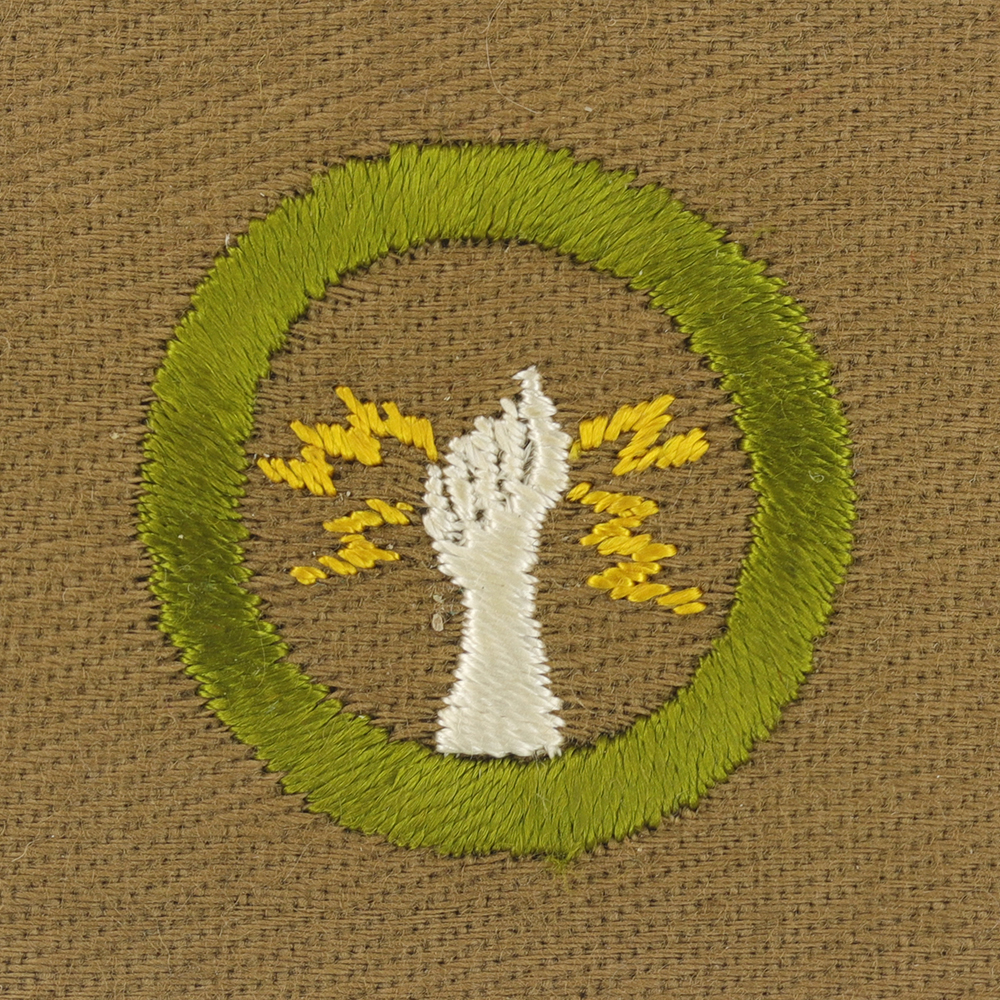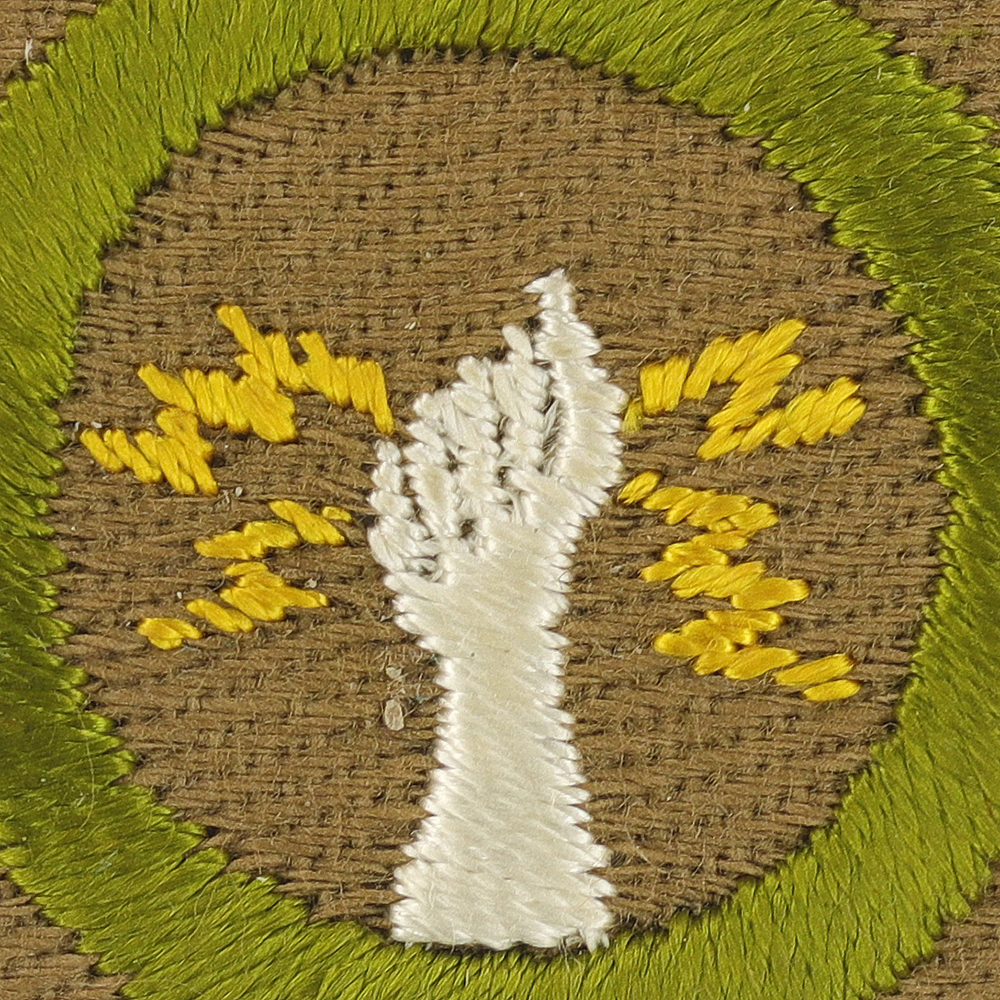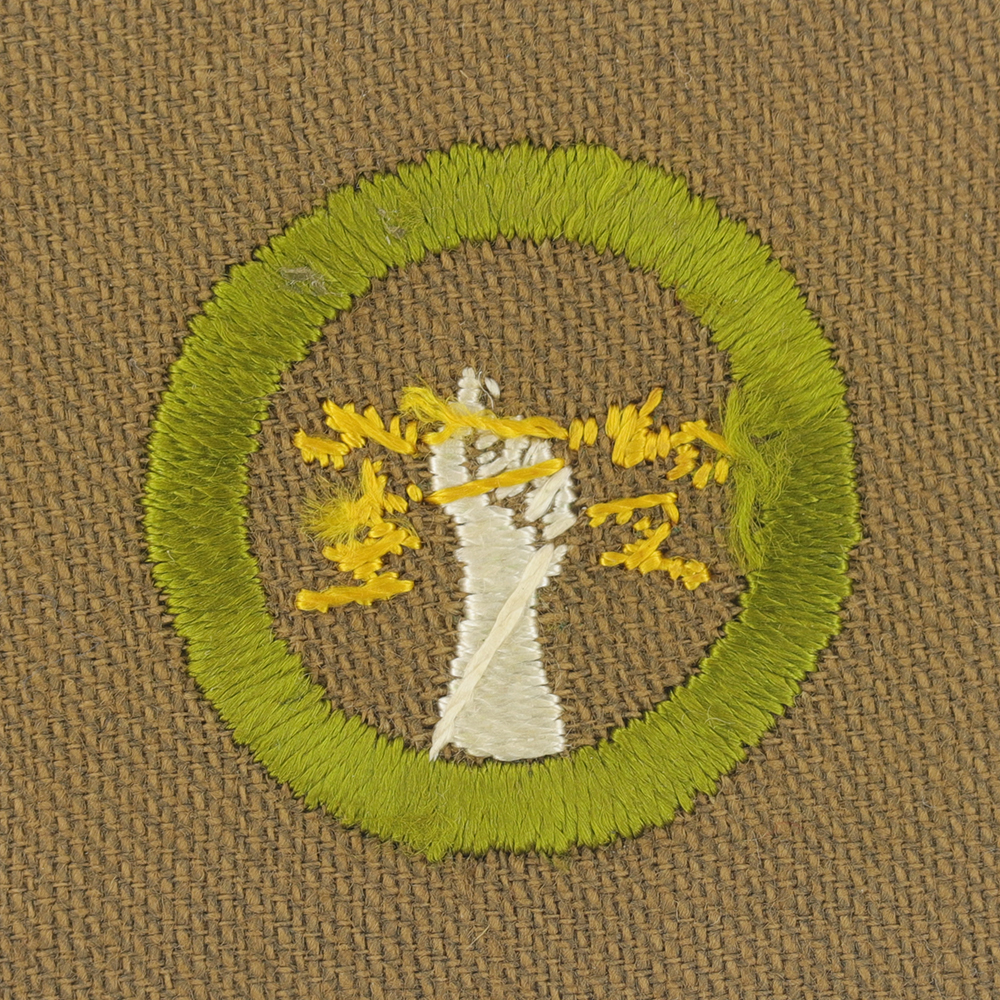
Fig. 1: Electr-AD-Front

Fig. 2: Electr-AD-Magnified

Fig. 3: Electr-AD-Reverse
Item Name: Electricity 1933
Item ID: Electr-AD
Collector Rating: 1
Additional Info:
- Fig. 1
- Cloth: Depression tan right twill
- Embroidery: Silk continuous
- Fig. 2:
- Design: Thumb extended upward and curls outward to right, index finger same width as othe fingers, index finger touches palm like other fingers, NO opening in palm
- Fig. 3:
- Back: Black imprint
Pamphlets Used to Earn this Badge
Requirements October 1914 until March 1927
1. Illustrate the experiment by which the laws of electrical attraction and repulsion are shown.
2. Understand the difference between a direct and an alternating current, and show uses to which each is adapted. Give a method of determining which kind flows in a given circuit.
3. Make a simple electro-magnet.
4. Have an elementary knowledge of the construction of simple battery cells, and of the working of electric bells and telephones.
5. Be able to replace fuses and to properly slice, solder, and tape rubber-covered wires.
6. Demonstrate how to rescue a person in contact with a live electrical wire, and have a knowledge of the method of resuscitation of a person insensible from shock.
Requirements March 1927 until January 1957
1. Illustrate the experiment by which the laws of electrical attraction and repulsion are shown.
2. Understand the difference between a direct and an alternating current, and show uses to which each is adapted. Give a method of determining which kind flows in a given circuit.
3. Make a simple electro-magnet.
4. Have an elementary knowledge of the construction of simple battery cells, and of the working of electric bells and telephones.
5. Be able to replace fuses and to properly slice, solder, and tape rubber-covered wires
6. Demonstrate how to rescue a person in contact with a live electrical wire, and have a knowledge of the method of resuscitation of a person insensible from shock.
7. Diagram a typical electric lighting and wiring system of an automobile.
8. Make and submit a diagram or sketch, showing the lights, switches and convenience outlets which are controlled by each fuse in his dwelling house or a dwelling house.
9. Read correctly an electric meter and compute a residence bill.

